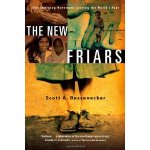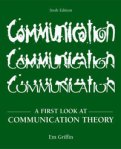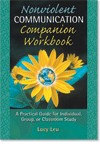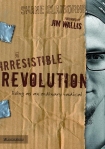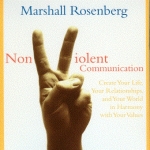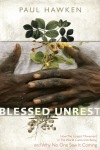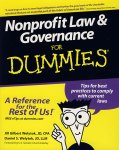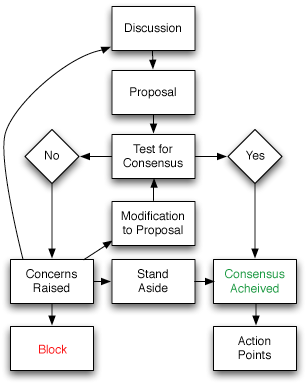As you may have seen in our previous post, we are tackling the 100 things challenge.
Our idea was to inventory first and then whittling down later.
Realization # 1: There are several different ways to count things.
According to one way of counting, I (Jay) currently have 83 things. But, that does not include my 48 articles of clothing. It also does not include the 61 things that Amber and I co-own together. Altogether I own 192 things. (83 + 48 + 61 = 192)
This does not include things we have in storage in Missouri, or things we are hold in common with Formation House this year, such as kitchen stuff and living room furniture.
There is probably room for more thoroughness in the way I have listed things below. Who is to say whether I should count individual handkerchiefs? There are no established rules for this sort of thing.
My rule of thumb, which I am trying to apply as consistently as possible, is: If I think of them as individual things (like my frisbees) I count them individually. If I think of them as a unit (like my hammer and nails and screwdriver) then I count them all as one.
The real question is: is this just a mindfulness exercise for me, where I learn to appreciate the well-edited life, and the total number of items isn’t what is important? Or is this an exercise in being a spartan, a mendicant, whittling the list down strictly to 100 things? This remains to be seen. But I expect the answer for me will be somewhere in the middle. If I were to choose the latter, I would need a strong, specific rationale.
Realization # 2: I can stand to get rid of some stuff. For example, there are razors in my shaving kit that I’ve had for two years and have never used. I also have clothes that I never wear. What am I doing owning 16 t shirts??
So, I still have some editing to do. But for now, here is the working list:
– – – – – –
Toiletries
1. Toothpaste
2. Toothbrush
3. Hair brush
4. Electric trimmer
5. Mustache scissors
6. Bar of soap/shampoo
7. Bath robe
8. Pj pants
9. Warm pj pants
10. Towel
11. Wash rag
12. Fingernail clippers
13. Hand cream
14. Shaving bag
15. Deodorant
16. Toothbrush holder
Personal stuff
1. Wedding ring
2. Pocket knife and backup knife
3. Wallet
4. Keys/whistle/bottle opener
5. Map of city/various bus schedules
6. Handkerchief x 3
7. eyeglasses
writing stuff
8. Writing paper/notebook
9. Pen
10. Pencil
11. Pen cup
12. clipboard
13. Journals
14. Envelopes/stamps
15. Letter box
Transportation
16. Bicycle
17. Helmet
Gadgets
18. Cell phone/charger
19. Wireless headphones
20. Scientific Calculator
21. Alarm clock / radio
22. Battery powered alarmclock
23. Voice recorder
shoes
24. House slippers
25. Waterproof shoes for winter
26. Other shoes (Toms)
27. Dress shoes (black and brown)
28. Old pair of shoes
29. Flip flops
Winter stuff
30. Coat
31. Hat/Scarf/Gloves
32. Hoodie
33. Fleece
34. Umbrella
books
35. KJV
36. Anthology of texts of world religions
37. Dictionary
Frisbees
38. Ultimate disc (currently missing)
39. Free style disc
40. Golf disc putter
41. Golf disc midrange
42. Golf disc diver
43. Other Frisbee
Misc.
44. plastic tote
45. Bottle cap collection
46. Pillow
47. Plastic drawers for socks
48. Tool box
49. Maglite
50. Shot glasses x 2
51. Hammock
52. Luggage
53. Memorabilia: rings, college pennant, yoyo, etc.
54. Ceramics tools
55. Backpack
56. Green stuffsac
57. Canvas backpack
58. Lunchbox
59. Mug
60. No spill insulated mug
camping
61. Tarp
62. Rope
63. Thermos
64. Camp saw/hatchet
65. Long underwear
66. Compass
67. First aid kit
68. Stuff sac
69. Twine
70. Camp salt and pepper
71. Call of the Wild
72. Igloo water cooler
73. Underarmor
74. Small flashlight
75. Carbineer
76. Camping desk of cards
77. Sunscreen
78. Bug spray
79. Cooking sterno
80. Lighters
81. Work gloves
82. Camp Mirror
83. Sweat pants
Clothes
84. Black polo
85. White polo
86. Striped polo
87. Many White t-shirts
88. Sweatshirt
89. Button down shirt short sleeve 1
90. Button down shirt short sleeve 2
91. Button down shirt short sleeve 3
92. T shirt 1
93. T shirt 2
94. T shirt 3
95. T shirt 4
96. T shirt 5
97. T shirt 6
98. T shirt 7
99. T shirt 8
100. T shirt 9
101. T shirt 10
102. T shirt 11
103. T shirt 12
104. T shirt 13
105. T shirt 14
106. T shirt 15
107. T shirt 16
108. Long sleeve dress shirt 1
109. Long sleeve dress shirt 2
110. Long sleeve dress shirt 3
111. Long sleeve dress shirt 4
112. Long sleeve dress shirt 5
113. Short sleeve dress shirt
114. Shirt other 1
115. Shirt other 2
116. Shirt other 3
117. Dress pants kaki
118. Dress pants other
119. Dress pants other
120. Blue jeans 1
121. Blue jeans 2
122. Blue jeans 3
123. Blue jeans 4
124. Blue jeans 5
125. Shorts 1
126. Shorts 2
127. Shorts 3
128. Shorts 4
129. Belt
130. Dress belt
131. Socks / underwear
TOGETHER LIST:
132. Tiny Glass figurine of a a flamingo and a giraffe
games
133. Chess
134. Scrabble
135. Settlers of Catan
136. Risk
137. Stratego
138. Cranium
139. Deck of cards
140. Rook cards
141. Blockus
142. Racko
143. Penta
144. Boardgame remix kit
145. Taboo cards
146. Madgab cards
147. Dice
148. Travel scrabble
149. Things cards
150. Scatagories
arts
151. markers
152. crayons
153. colored pencils
154. oils
155. acrylics
156. brushes
157. brush cleaner
158. sketch book
159. drop cloth
160. tape masking, packing, duck, scotch
161. paint thinner
furniture and room accents
162. Desk
163. Desk chair
164. Bed
165. Curtains
166. Sheets – 2 sets
167. Blankets – 4
168. Detergent
169. plant
170. Framed picture
171. Poster map of city
172. Picture of family
173. Scented candle
174. Painting of flowers
175. Painting of gumdrop tree
Transportation
176. Car
Gadgets
177. Laptop
178. Ipod
179. Camera
Camping
180. Picnic set
181. tent
misc.
182. Medicine box
183. Letter binder
184. Ceramic bowls
185. Space heater
186. File box/important documents
187. Calendar
188. various towels
189. Bag o chocolate
190. Bag o candy
191. Pile o burned cds
192. A few (6) extra writing utensils
– – – – – – –
Read Full Post »



























